The Modern Slave
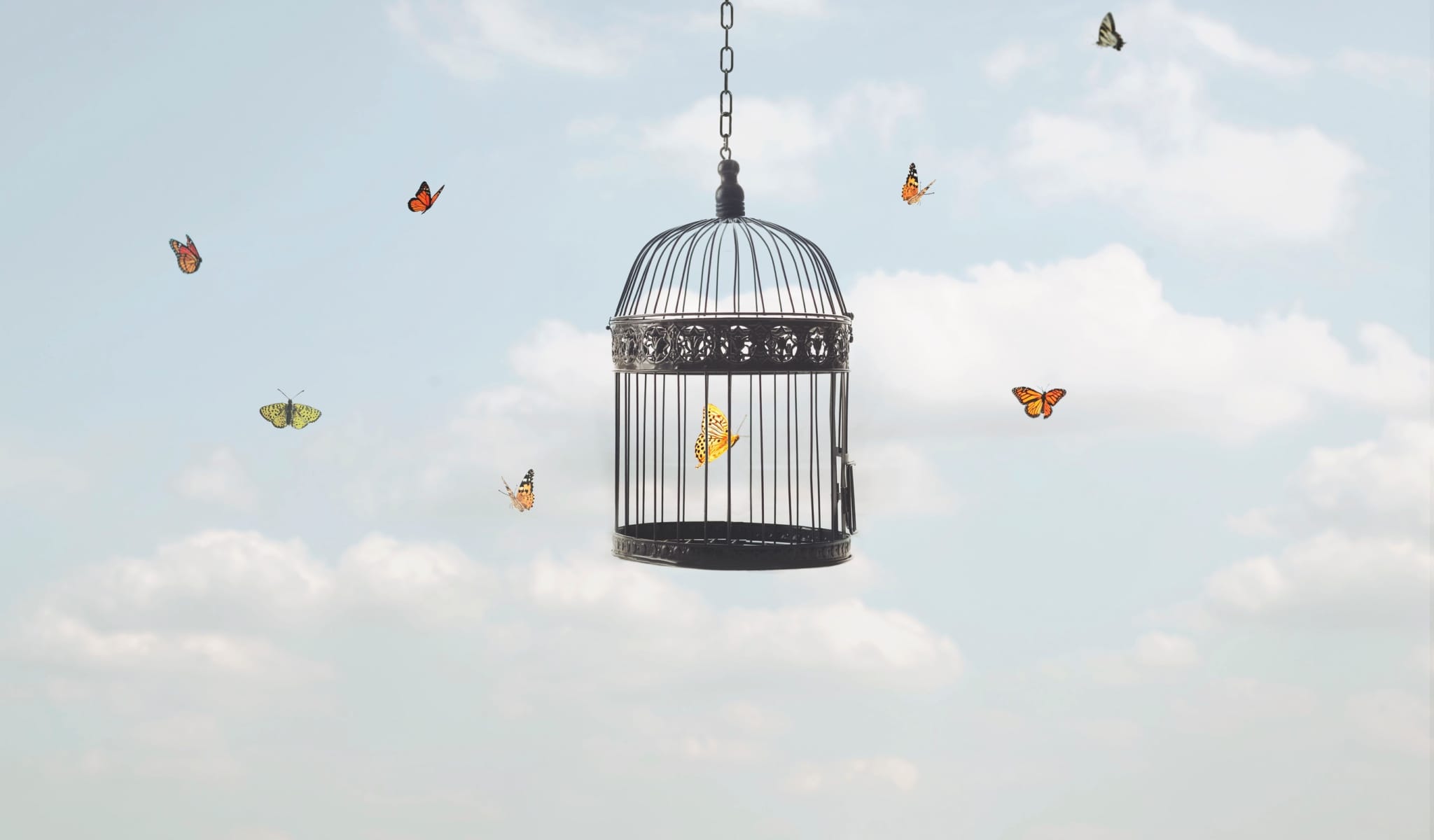
“The best way to keep a prisoner from escaping is to make sure he never knows he’s in prison.”
—Fyodor Dostoyevsky
Most people hear ‘modern slavery’ and picture trafficking victims or sweatshop workers—suffering that’s clearly visible, obviously wrong, and comfortably distant from their daily lives. What if the most effective slavery in history isn’t hidden—but public, celebrated, and defended by the very people it enslaves?
I understand that comparing contemporary life to slavery will make some readers uncomfortable. That discomfort is the point. We’ve been conditioned to reserve the word ‘slavery’ for its most extreme historical forms, but slavery is fundamentally about the extraction of labor through coercion—regardless of whether that coercion is applied with whips or withholding.
To be clear: I’m not minimizing the horrific brutality of historical slavery or the ongoing horrors of contemporary trafficking. Chattel slavery involved unimaginable physical cruelty, family separation, and dehumanization that scarred generations. The whip, the auction block, the chain—these were instruments of terror that reduced human beings to property through violence and degradation.
I recognize that freedom and slavery exist on a spectrum. Between the plantation owner’s whip and complete autonomy lies a range of arrangements—serfdom, indentured servitude, debt bondage, and various forms of regulated participation in society. Most people would place our current system somewhere in the middle of this spectrum, arguing we have enough choices and protections to avoid the ‘slavery’ label.
But consider where we actually fall: When you cannot keep the majority of your labor, cannot opt out without facing state violence, cannot choose how your extracted labor is used, and face increasing surveillance and restriction of movement—how far from the slavery end of the spectrum are we really? The question isn’t whether we’re chattel slaves, but whether we’re close enough to that end to warrant the comparison.
I use ‘slavery’ not to minimize historical suffering, but to cut through the comfortable language that obscures the actual relationship. Terms like ‘social contract’ and ‘civic duty’ prevent us from examining what’s really happening. Sometimes the most uncomfortable comparisons reveal the most important truths.
This isn’t about personal hardship or material deprivation. Many people living under this system—myself included—enjoy comforts that would have amazed historical royalty. The sophistication of modern control lies precisely in maintaining compliance through comfort rather than suffering. A golden cage is still a cage, and a comfortable slave is still a slave.
What if the most effective slavery in history makes its subjects grateful for their subjugation?
The Invisible Shackles
The genius of contemporary slavery isn’t the whip, it’s the W-2. It’s not the chain, it’s the mortgage payment. It’s not the overseer with a gun, it’s the IRS agent with a lien.
Think I’m being dramatic? Let’s examine the mechanics.
You surrender 30-50% of your labor before you ever see it. If you refuse, men with guns will eventually arrive at your door. The extraction is comprehensive and inescapable: earn money, pay income tax; own property, pay property tax; spend money, pay sales tax; save money, lose to inflation tax; invest successfully, pay capital gains tax; start a business, pay for licenses; run a profitable business, pay corporate tax; give money away, pay gift tax; die with assets, pay inheritance tax. Every economic action becomes a revenue opportunity for the system that owns your labor.
You can’t opt out of funding wars you oppose, surveillance systems that monitor you, or bureaucracies that regulate your choices. Your ‘property’ can be seized for unpaid taxes, even if you own it outright.
Historical slaves at least knew they were enslaved. The violence was visible, the coercion obvious, the enemy identifiable. Today’s slaves are convinced they’re consumers.
But here’s the real masterpiece: you’ve been convinced this is freedom.
The Comfortable Cage
The cage isn’t just bigger now—it’s learning. As I documented in “The Invisible Leash,” we’re witnessing the elimination of cognitive friction itself. When AI systems can predict your needs before you feel them and shape your choices before you make them, you’re not using technology—you’re being optimized by it.
But the technological cage is only half the story. We’re witnessing the colonization of human biology itself.
The modern slave doesn’t just surrender their labor—they surrender their cells. Your nervous system is being mapped for networking. Your DNA is being collected, stored, and potentially auctioned in bankruptcy proceedings.
When 23andMe filed for bankruptcy, it left 15 million DNA samples vulnerable to creditors, while officials like Netanyahu openly announced genetic database plans and Congressman Crow warned about DNA-targeted bioweapons.
When RFK, Jr. announced universal wearables within four years, the infrastructure required—regardless of stated health goals—represents the final component of comprehensive biological surveillance that creates permanent legal records for insurance companies, employers, and courts to weaponize against you.
This represents the perfect synthesis of my previous investigations: “The Corporate Veil’s” legal transformation that created the framework for treating citizens as corporate assets, the technological apparatus that perfected the delivery mechanisms, and the biological colonization that provided the final substrate for control.
But here’s what makes this convergence truly unprecedented: we’re witnessing the emergence of anticipatory compliance. Your smartwatch doesn’t just track your health—studies show wearables can detect conditions like Covid-19 up to 7 days before symptoms appear, while insurance companies like John Hancock offer up to 25% premium discounts based on your activity data. Your phone doesn’t just suggest routes—it knows your behavioral patterns well enough that employers are using fitness trackers to monitor employee performance and “reliability” based on movement data. Your streaming habits don’t just reflect your preferences—they shape your psychological profile in ways that determine your access to credit, housing, and employment.
The modern slave isn’t just compliant—they’re predicted, pre-approved, and programmed for the life the system has chosen.
The Evolution of Bondage
Alongside this invisible system, the old brutalities persist today. Children mine cobalt in the Congo under armed guard to power our smartphones. Human trafficking generates $150 billion annually through forced labor and sexual exploitation. Millions remain trapped in debt bondage, forced marriage, and industrial slavery that looks remarkably similar to bondage from centuries past.
What makes the form of slavery I’m describing historically unique isn’t its cruelty but its invisibility. Traditional slavery—both historical and contemporary—relies on obvious coercion: if you’re owned, you know it. The master’s authority is visible, violent, and direct. Resistance means physical punishment, but at least the enemy is identifiable.
The slavery of the developed world operates through what we might call the ‘white glove model’—polished, comfortable, and marketed as benefit rather than bondage. Traditional slaves are told they’re property; modern slaves are told they’re customers. Traditional slaves are controlled through fear; modern slaves through convenience. Traditional slaves are kept ignorant; modern slaves are overwhelmed with curated information that shapes their conclusions.
The plantation owner never convinced his slaves that chains were jewelry. The Congolese warlord doesn’t pretend the cobalt mine is a wellness center. But we’ve been convinced that surveillance is safety, that debt is prosperity, that algorithmic control is empowerment.
Traditional slavery was economically inefficient—you had to house, feed, and guard your property. Modern slavery is self-maintaining: the slaves pay for their own monitoring devices, compete for their positions, and attack anyone who suggests they’re not free.
You celebrate when your smartwatch reminds you to exercise. You feel grateful when your phone suggests the fastest route. You trust algorithms to curate your news, your entertainment, your potential romantic partners.
We’ve been conditioned to love our cages so thoroughly that questioning them feels like madness.
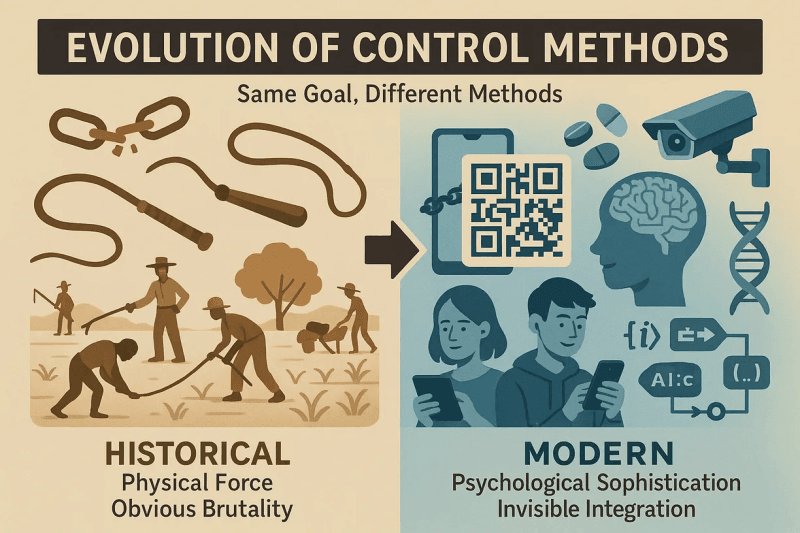
The Financial DNA of Control
The economic architecture of modern slavery operates through the systematic conversion of citizens into corporate assets. The legal frameworks established after 1871 created the foundation for treating people as revenue-generating entities rather than sovereigns, as evidenced by how your name appears in ALL CAPS on government documents—the same format used for corporate entities.
This isn’t just bureaucratic formatting—it’s the paper trail of your conversion from citizen to inventory. You’re not exercising rights; you’re generating revenue for systems that process you like any other corporate asset.
The financial enslavement operates through debt that can never be repaid because the ‘money’ used to pay it is itself debt. Federal Reserve notes aren’t currency—they’re IOUs in a system where every dollar represents an obligation to private banks. You’re trying to pay off debt with debt instruments, which is mathematically impossible.
The $37 trillion national debt isn’t just a number—it’s a lien against your future productivity. You didn’t vote for this debt, you can’t discharge it, but you’re legally obligated to service it through your labor
And here’s where the noose tightens: Central Bank Digital Currencies represent programmable money that can expire, restrict purchases, or shut off entirely based on compliance—eliminating the last vestige of anonymous economic activity.
The trajectory toward financial control wasn’t accidental. The Economist’s 1988 cover predicted a ‘world currency’ emerging from the ashes of national currencies by 2018—exactly when cryptocurrency and CBDC development accelerated. By 2021, the same publication celebrated ‘Govcoins’ as inevitable, replacing ‘In God We Trust’ with ‘In Tech We Trust.’ This 33-year progression from prediction to celebration reveals the deliberate timeline for eliminating monetary sovereignty.

Cash, the last vestige of anonymous economic activity, is being systematically eliminated. What they call “financial inclusion” is actually economic imprisonment: making every purchase a permission request to algorithmic authorities.

The Divided Plantation
Perhaps most brilliantly, the system has convinced its slaves to fight each other instead of recognizing their shared bondage.
As I explored in “Divided We Fall,” the same forces profiting from your labor also fund the narratives that keep you arguing with your neighbors. The most effective plantation is one where the slaves police each other.
The protesters who storm the Capitol think they’re fighting tyranny while carrying tracking devices that record their every move. The activists who march for social justice organize through apps that harvest their data while promoting policies that expand surveillance. Both sides livestream their ‘resistance’ on platforms owned by their oppressors.
The genius isn’t in the politics—it’s in ensuring that no matter which side you choose, you’re still feeding the machine that enslaves you.
The Technological Leash Tightens
The convergence is accelerating through coordinated infrastructure:
- Identity Capture: Biometric databases make anonymous existence impossible
- Data Processing: Massive server farms process every biometric signature in real-time
- Interface Elimination: ‘Contextually aware’ devices remove conscious choice friction
- Cognitive Control: AI systems shape how you think about questions themselves
- Economic Dependency: Digital income tied to compliance monitoring
- Biological Integration: Neural interfaces turn your cells into network nodes
The technology goes beyond wearables to injectable nanosensors that can cross the blood-brain barrier and wirelessly transmit neural activity to external devices, allowing for direct monitoring of thoughts and brain activity. University of California researchers have developed NeuroSWARM3, gold-plated nanosensors “the size of a single viral particle” that can travel through the bloodstream, cross the blood-brain barrier, and “convert the signals that accompany thoughts to remotely measurable signals.”
The convergence I’ve documented across multiple essays reveals something unprecedented: a system where your legal status, technological dependencies, and biological processes have been integrated into a single control architecture. The modern slave isn’t just monitored—they’re systemically integrated at every level of existence.
The War on Consciousness: Documented in Patents
This isn’t cultural drift. It’s not accidental. It’s not even just market forces.
This is weaponized psychology, and the patents are the smoking gun.
The US Patent Office contains thousands of entries detailing the technical manipulation of human consciousness—filed by corporations, defense contractors, and intelligence affiliates. These aren’t conspiracy theories. They’re government-validated blueprints. Critics often dismiss patents as mere speculation—”just because it’s patented doesn’t mean it’s built.” But these aren’t isolated theoretical documents. They represent a documented progression from classified research to consumer products, a technological pipeline from government laboratories to your living room.
US Patent 6,506,148 B2: Nervous System Manipulation by Electromagnetic Fields from Monitors. Your screen isn’t just displaying images—it’s capable of modulating your nervous system.

US Patent 5,159,703: Silent Subliminal Presentation System. Sends inaudible signals straight to your subconscious—bypassing conscious resistance.
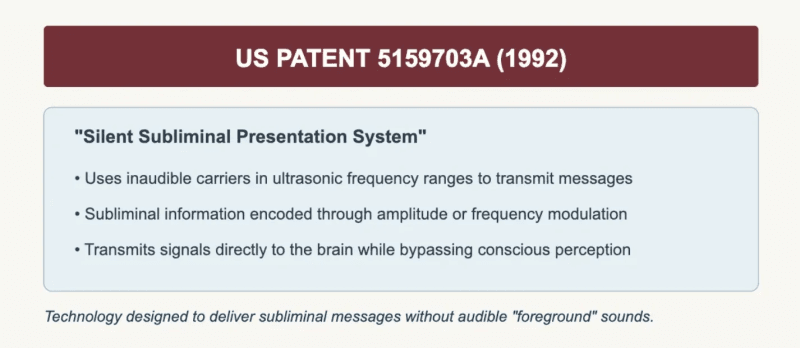
US Patent 3,951,134: Remote Monitoring and Alteration of Brain Waves. You don’t even need to wear the device. The environment itself becomes the weapon.
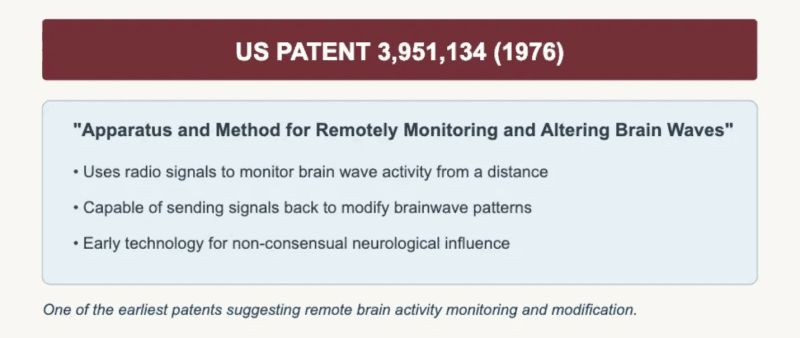
Even Apple has filed patents to monitor brain waves via AirPods—framed as health optimization, but in reality, they represent applied surveillance of thought.
What MKULTRA did with electrodes and LSD, modern technocrats do with earbuds and screen time. The modern slave doesn’t just carry tracking devices—they carry consciousness-control tools disguised as entertainment, wellness, and productivity.
This is a war on awareness itself—the systematic erasure of human autonomy in favor of algorithmic obedience. The only thing more chilling than these patents existing is the fact that we’re voluntarily paying for them.
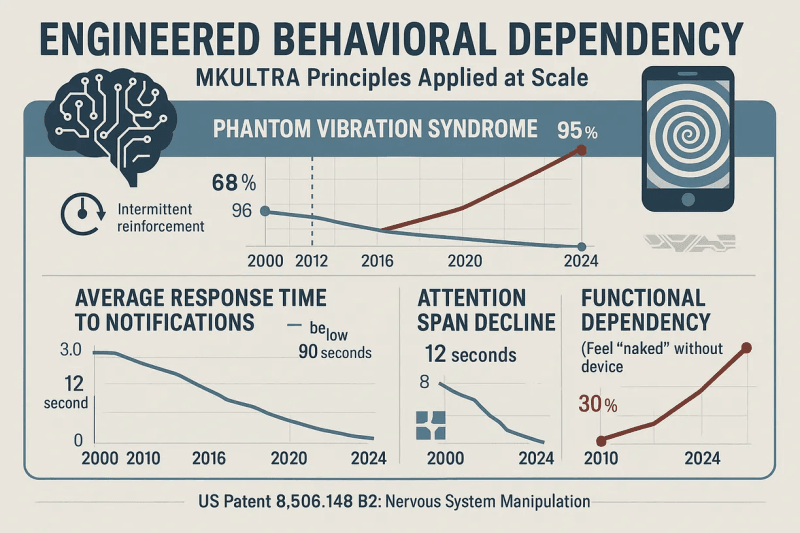
The Soft Enforcement Layer
But how does the Control Grid maintain compliance without obvious violence? Through the emerging infrastructure of soft coercion—systems that make resistance economically and socially impossible.
The enforcement doesn’t come through jackbooted thugs but through bureaucratic strangulation. History shows us this pattern: the worst totalitarian states didn’t just imprison dissidents—they made exit itself impossible. As Balaji Srinivasan recently observed on X, “The right to exit is a fundamental human right. It’s equivalent to individual consent, and to communal self-determination. Even the UN recognizes this. The worst states in history revoked the human right to exit. The Soviets, the Nazis, the East Germans, the Cubans, the North Koreans…they did not let you leave.”
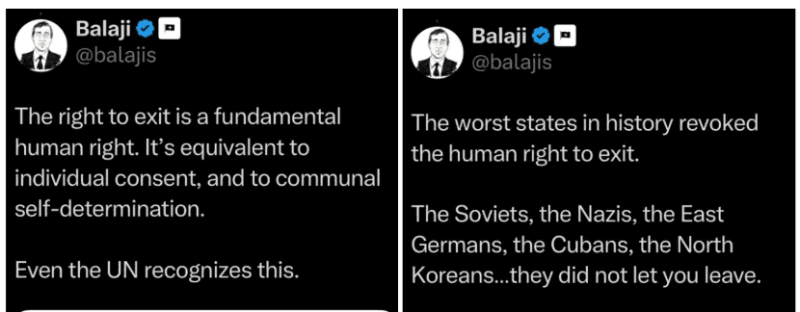
He provided historical documentation showing how:
The Nazis implemented the Reich Flight Tax in 1931 to rob emigrating Jews of their assets.

East Germany criminalized leaving as “desertion from the republic.”

The Soviets imposed “diploma taxes” on educated emigrants.
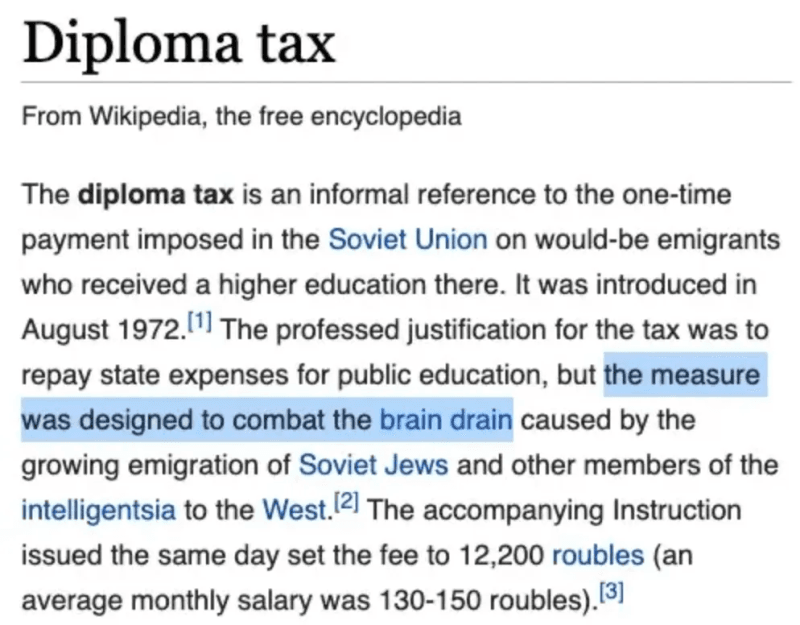
Cuba made escape so difficult that people still risk death on makeshift rafts.

The pattern is always the same: economic barriers replace physical walls, targeting those most likely to resist—the educated, the wealthy, the independent-minded.
Today’s version is more sophisticated but functionally identical: rather than preventing physical departure, modern systems make economic and social participation impossible without compliance—creating internal exile within your own country.
- AI workplace monitoring: Companies using behavioral analytics to assess employee “reliability” and performance through comprehensive surveillance of file activity, communication, and screen behavior
- Biometric payment systems: Facial recognition replacing cash transactions at stadiums and retail locations, with venues like the Cleveland Browns and Intuit Dome requiring facial authentication for concessions
- Social credit integration: Insurance premiums tied to wearable device compliance and lifestyle monitoring, with 69% of Americans willing to wear devices for insurance discounts
- Digital ID expansion: Coordinated global rollout of mandatory digital identity systems for basic services, with experts predicting 5 billion digital IDs globally by 2024, including Mexico’s new biometric CURP system requiring facial scans and fingerprints for internet access
- Carbon passports: UK’s proposed yearly travel allowances restricting movement based on digital compliance, announced just last week
When I detailed this soft enforcement architecture in 2022, friends told me I was being paranoid. These mechanisms have gone from ‘conspiracy theory’ to openly considered—and often implemented—policy in three years.
This isn’t just surveillance—it’s economic exclusion for non-compliance. In the UK alone, police arrest over 12,000 people annually (more than 30 per day) under just two speech-related laws. The system doesn’t need to arrest you; it just needs to make your life impossible without submission.
Your social credit score doesn’t put you in jail; it just makes you unemployable. Your vaccine passport doesn’t physically restrain you; it just makes you unable to participate in society. Your CBDC wallet doesn’t chain you; it just expires your money if you exhibit unapproved behavior.
The genius is making compliance feel voluntary while making resistance practically impossible.
The Global Architecture
This coordination isn’t accidental. When identical digital ID systems roll out globally using the same frameworks, when QR code rationing appears simultaneously across continents, when biometric requirements emerge in lockstep worldwide—we’re witnessing architecture, not random evolution.
The World Economic Forum openly describes this coordination through their ‘digital identity’ initiatives, ‘Great Reset’ agenda, and ‘stakeholder capitalism’ frameworks that integrate technological, financial, and biological control systems. The rhetoric of ‘building back better’ creates the infrastructure for comprehensive human management. As Laura Edelson, a computer scientist at Northeastern University, noted about China’s digital ID system just last week: ‘They want the policeman to be in your head, and a really important way of making people feel that policeman in their head is removing any illusion that someone might have that they’re anonymous.’
What China implements openly as social control, the West adopts through the language of health, safety, and convenience—but the architecture remains identical. We’re witnessing the Chinafication of the West, where the same surveillance systems get rebranded as freedom.
The Synthesis of Control
What emerges from connecting these patterns is a form of slavery more sophisticated than anything in human history: what I’ve been calling ‘The Control Grid,’ a term I first heard from Catherine Austin Fitts.
The financial layer (documented in “The Corporate Veil“) reduces you to a revenue-generating entity through legal frameworks that treat citizenship as corporate registration.
The cultural layer (explored in “Engineering Reality“) manufactures the conflicts that keep you fighting other slaves instead of recognizing the plantation.
The technological layer (exposed in “The Invisible Leash“) eliminates cognitive friction through AI systems that predict and shape your choices before you make them.
The biological layer (revealed in “Node Without Consent“) colonizes your cellular processes through devices that monitor and potentially control your physical responses.
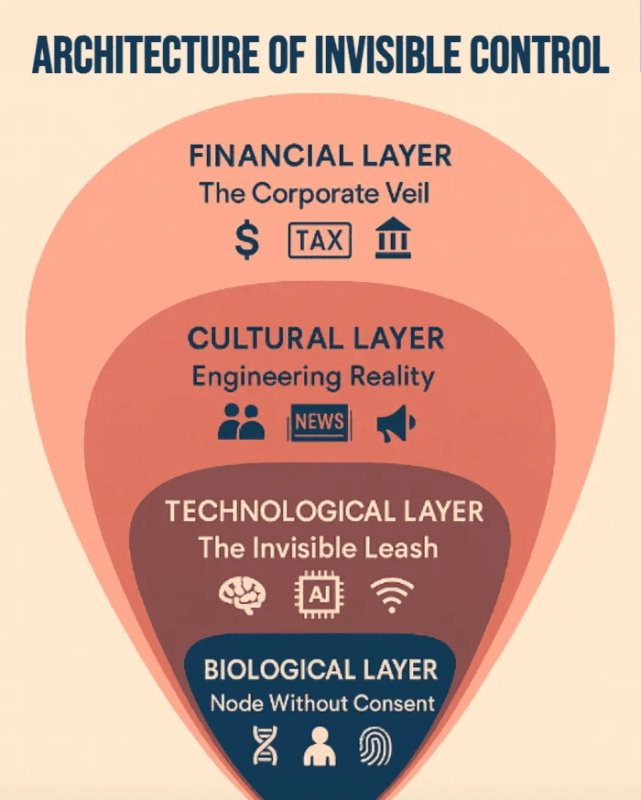
The result isn’t just surveillance or control—it’s the systematic replacement of human agency with algorithmic optimization. You’re not living your life; you’re performing a script written by systems that know you better than you know yourself.
Historical slavery relied on external coercion—slaves knew they were enslaved even when powerless to resist. Modern slaves have surrendered their decision-making processes to systems that predict their choices, curate their information, and shape their desires. The most profound enslavement isn’t of the body—it’s of the will itself. Once you control consciousness—what people think, how they think, even whether they think—every other form of control becomes automatic. Cognitive sovereignty is the foundation of all other freedoms.
Programming the Next Generation
But the Control Grid’s most insidious achievement is psychological: we’re raising children who will never know what freedom felt like.
We’ve created what can only be called psychological cripples—people who are practiced at reading social cues and adjusting their thoughts accordingly, but who have never learned to form independent judgments. They mistake consensus for truth and popularity for virtue. This systematic conditioning process creates individuals who’ve never developed the capacity for authentic dissent.
But it goes deeper than social conditioning. We’re witnessing the systematic prevention of human consciousness development itself.
Consider what’s being lost: A child who learns to ‘feel’ through mood-tracking apps never develops internal emotional awareness. Kids who navigate exclusively through GPS never develop spatial reasoning or intuitive direction. Those who get dopamine hits from notification sounds never learn sustained attention or deep focus. Children who ask Alexa for answers never develop the cognitive struggle that builds critical thinking.
This isn’t just convenience—it’s cognitive replacement. When your device tells you how you slept, how you feel, what you need, when to eat, where to go, what to think—the faculty for self-awareness atrophies. The child never learns to read their own body’s signals, trust their own judgment, or develop what previous generations simply called ‘common sense.’
Unlike the Stasi’s victims who at least had some years of normal psychological development, these kids never get that foundation. They never develop what psychologists call ‘internal locus of control’ because they never get to make real choices with real consequences—or even learn to perceive reality without technological filters.
The result is a generation that’s either paralyzed by self-consciousness or completely reckless. Some retreat into careful blandness, crafting personas so sanitized they might as well be corporate spokespeople for their own lives. Others embrace weaponized exposure because they figure they’re already screwed.
Most devastatingly, we’re creating humans who literally cannot conceive of unmediated existence. They’ve never experienced unmonitored thought, untracked movement, or unrecorded conversation. To them, privacy isn’t a right being taken away—it’s an alien concept that feels dangerous and unnecessary.
We’re not just surveilling them—we’re programming them. Teaching them that having real convictions is dangerous, that independent thought carries unlimited downside risk, that technological mediation is superior to human judgment, that the most important skill in life is reading algorithmic cues and adjusting accordingly.
This creates the perfect slaves: people who police themselves, who mistake their cage for safety, who’ve forgotten that thoughts are meant to be shared and convictions are meant to be defended—because they never learned these capacities existed in the first place.
The Recognition
The first step toward freedom is recognizing the Control Grid. Not metaphorically—literally.
Examine your legal documents. Notice the capitalization patterns. Study how you’re identified in these systems. Track your labor extraction—calculate how much of your productivity disappears before you see it.
Most importantly, observe your own behavior. How often do you ask your device how you feel instead of feeling it yourself? How many decisions get shaped by algorithmic suggestions? How much of your self-awareness has been outsourced to technological interpretation?
They carry their monitoring device voluntarily, pay for their own surveillance, and defend the system that harvests their data. They vote in elections that don’t change the fundamental architecture of control, celebrate technological ‘conveniences’ that eliminate their agency, and attack anyone who questions the system.
They have more gadgets than any generation in history yet less control over their time, more information yet less understanding of how their world works, more ‘rights’ yet fewer choices about the fundamental terms of their existence.
The Mirror
Look in the mirror. What do you see—a free citizen or a well-managed resource?
You surrender your labor through payroll deduction. You submit to surveillance through consumer electronics. You accept financial dependency through debt-based currency. You participate in division through manufactured political theater. You outsource your biological awareness to technological mediation.
Yet this system is celebrated as freedom.
Modern slaves don’t live in chains—they live in financial obligations. They don’t answer to overseers—they answer to algorithms. They work not to build their own wealth but to service debt they never chose while feeding systems designed to harvest their biological essence.
The Choice
You have three options:
Remain unconscious. Keep believing the system works for you. Trust that your vote matters, your devices serve you, and your sacrifices are for a noble cause. It’s comfortable. It’s easy. It’s probably what most people will choose.
Become conscious but stay compliant. Recognize the system for what it is but continue participating because the alternatives seem too difficult or dangerous. At least you’ll understand why you feel increasingly trapped.
Become conscious and seek freedom. This is the hardest path. It requires questioning everything you’ve been taught about citizenship, money, technology, and authority. It means accepting that the system you’ve defended might be the source of your bondage.
Beyond the Digital Plantation
“A really efficient totalitarian state would be one in which the all-powerful executive of political bosses and their army of managers control a population of slaves who do not have to be coerced, because they love their servitude.”
—Aldous Huxley
The recognition that we’ve been enslaved by systems we defend isn’t cause for despair—it’s the foundation for liberation. The same technologies that enable unprecedented surveillance also enable unprecedented coordination among those who recognize the system’s true nature.
But first, you have to see the Control Grid. You have to acknowledge that the most effective slavery in human history doesn’t require whips or chains—just smartphones, credit scores, and the persistent illusion that monitoring equals caring.
The modern slave looks like someone with a job, a mortgage, a smartwatch, and a Social Security number. They have more conveniences than any generation in history yet less sovereignty over their existence.
The truth might be uncomfortable, but it’s the only foundation upon which genuine freedom can be built.
After all, you can’t escape a prison you don’t know you’re in.
And the first step to freedom is admitting you’re not already free.
Republished from the author’s Substack
-

Joshua Stylman has been an entrepreneur and investor for over 30 years. For two decades, he focused on building and growing companies in the digital economy, co-founding and successfully exiting three businesses while investing in and mentoring dozens of technology startups. In 2014, seeking to create a meaningful impact in his local community, Stylman founded Threes Brewing, a craft brewery and hospitality company that became a beloved NYC institution. He served as CEO until 2022, stepping down after receiving backlash for speaking out against the city’s vaccine mandates. Today, Stylman lives in the Hudson Valley with his wife and children, where he balances family life with various business ventures and community engagement.












